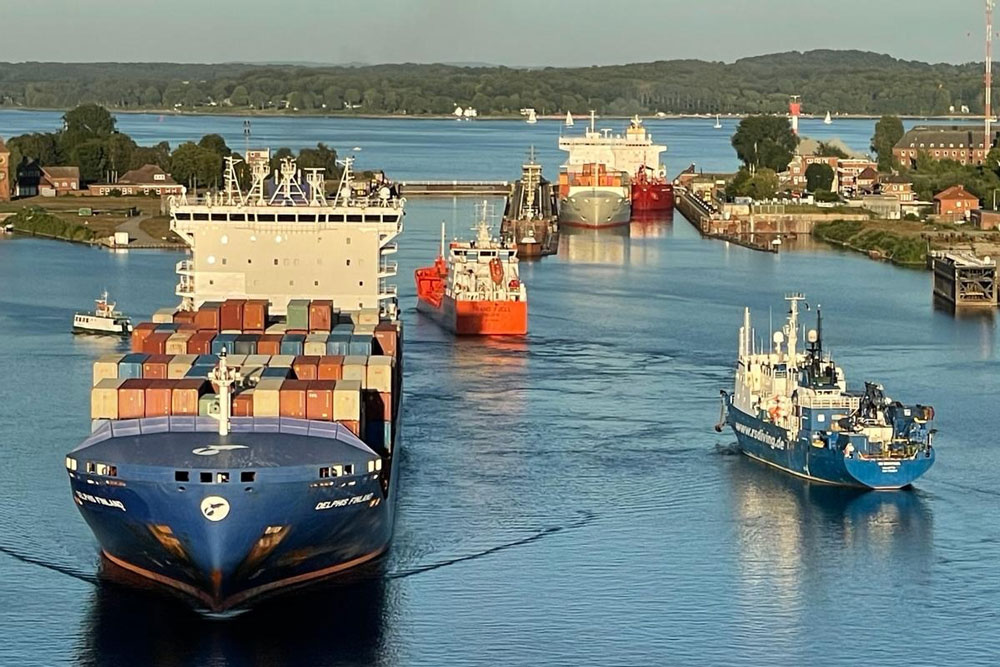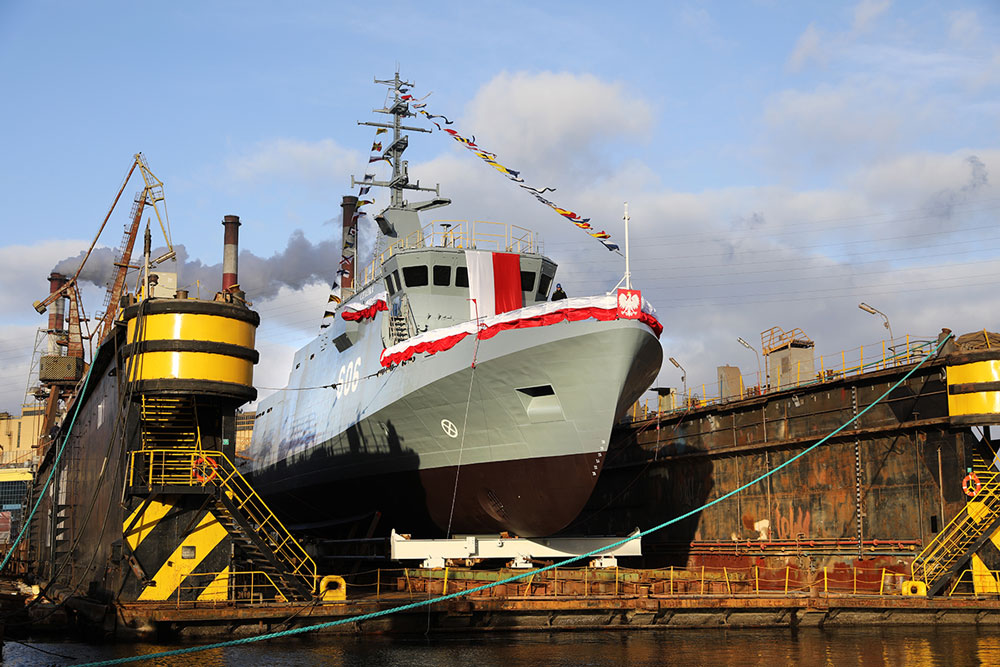Traffic on the Kiel Canal (NOK) declined slightly last year.
This result was published today by the Federal Waterways and Shipping Administration (WSV). According to the WSV, the number of ships remained almost constant, with a slight decline in cargo volumes. A total of 77,193,312 tons of cargo were transported through the NOK (2022: 82,254,167). This corresponds to a decrease of 6.2%.[ds_preview]
Last year, 26,659 ships sailed on the NOK (2022: 26,882 ships). That is 0.8% less. In terms of gross tonnage, the total number fell to 119,198,877 GT (2022: 133,068,966 GT). According to the WSV, the calculated average size of NOK ships (so-called midships) has decreased slightly compared to previous years. In 2023, the gross tonnage of the midship in through traffic was 5,476 (2022: 5,945/ 2021: 5,729).
Global influences have an impact on NOK result
Eric Oehlmann, Head of the Directorate-General for Waterways and Shipping: “The Kiel Canal has maintained its role as an indispensable international maritime transport route. Global influences and other disruptions have only had a minor impact on traffic. The safe connection between the North Sea and the Baltic Sea remains an important part of the traffic routes. The expansion measures along the canal will make it even more reliable in the future.”
The busiest connections in 2023 include ship movements between Sweden and the Netherlands (1,398), between Poland and the Netherlands (1,120) and between Sweden and Great Britain/Northern Ireland (870).
The figures for part-route traffic (ship traffic to and from the ports on the NOK) rose again. In 2023, 6,167,258 tons of cargo were transported on the NOK (2022: 6,000,117). The number of ships was 6,955 (2022: 6,338). The increase is also reflected in the gross tonnage, which amounted to 11,290,134 in 2023 and 10,942,927 in 2022.
The Kiel Canal was again primarily used by dry cargo/multi-purpose vessels in 2023, with a total of 12,152 (2022: 12,101). In second place are tankers: 3,483 (2022: 3,529). In third place are container ships: 3,293 (2022: 3,691).
807 Russian ships in the NOK
Russian ships are generally prohibited from calling at ports in the EU and using locks. However, exceptions to this rule are possible for certain transport goods/products, according to the WSV. For example, for agricultural, pharmaceutical and medical products or energy sources. This requires a permit, which is issued by the Federal Office of Economics and Export Control (BAFA) in individual cases.
In 2023, 807 ships sailed through the Kiel Canal to and from Russian ports, with a cargo volume of 2.629 million tons. In 2022, the figure was 1,420 ships with 5.713 million tons. This represents a 43.17% decrease in the number of ships and a 53.98% decrease in cargo volumes.
Pleasure craft can book passage digitally
The number of pleasure craft through the locks fell slightly in 2023 to 11,489. In the previous year, there were 11,788 pleasure craft. Since spring 2023, recreational boaters have been able to book their NOK passage digitally in the new WSV webshop.
Jörg Heinrich, Head of the Maritime Shipping Department at the GDWS: “To stabilize the canal embankments, the maximum permitted speed of ships was limited to a uniform 12 km/h last summer. Based on the experience gained to date, this has increased the average passage time through the NOK by around 45 minutes. The pilots on the NOK and the canal helmsmen are currently adjusting their membership levels to the extended consultation times on the bridge of the ships. According to experts, the reduction in speed is helping to increase traffic safety.”















